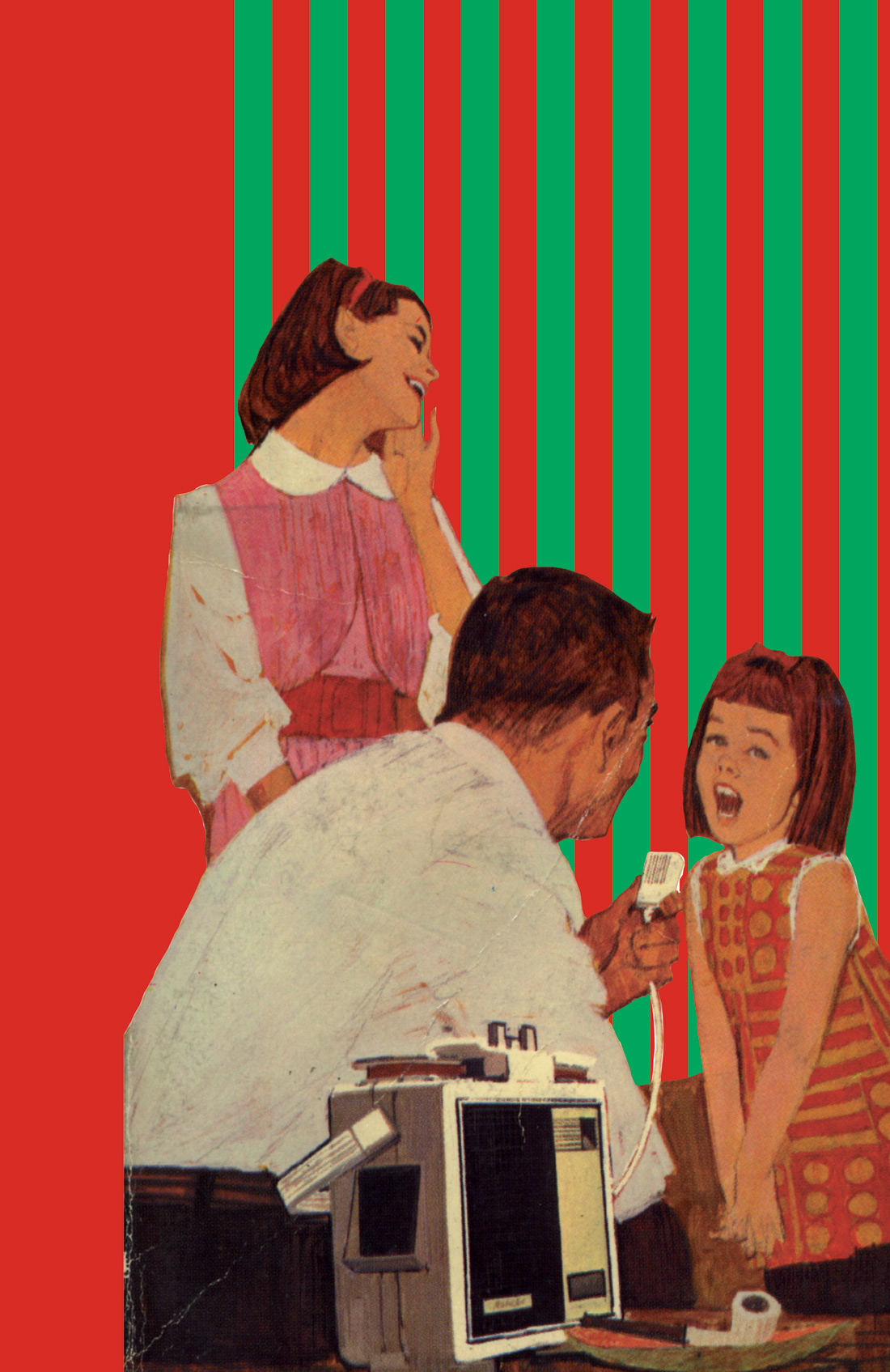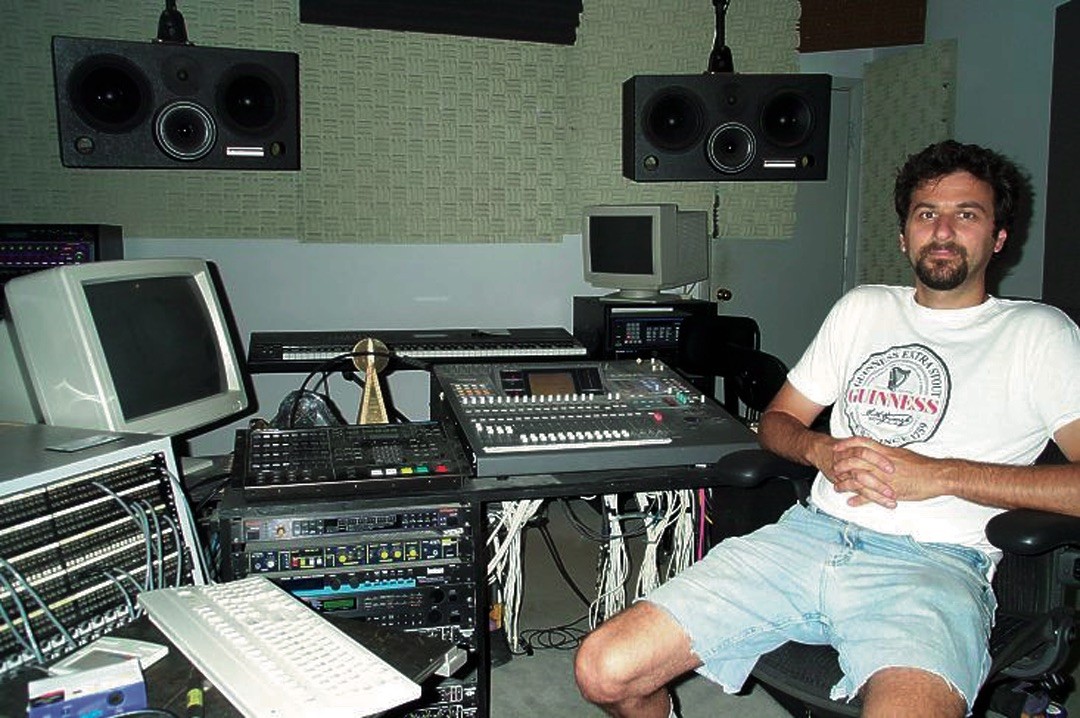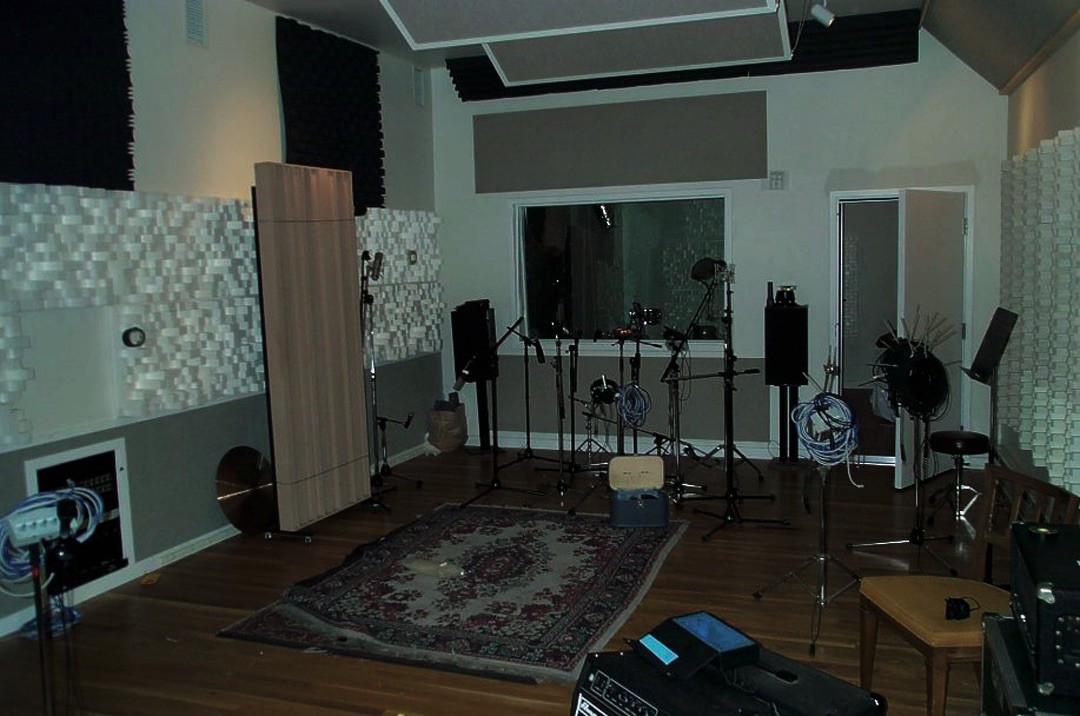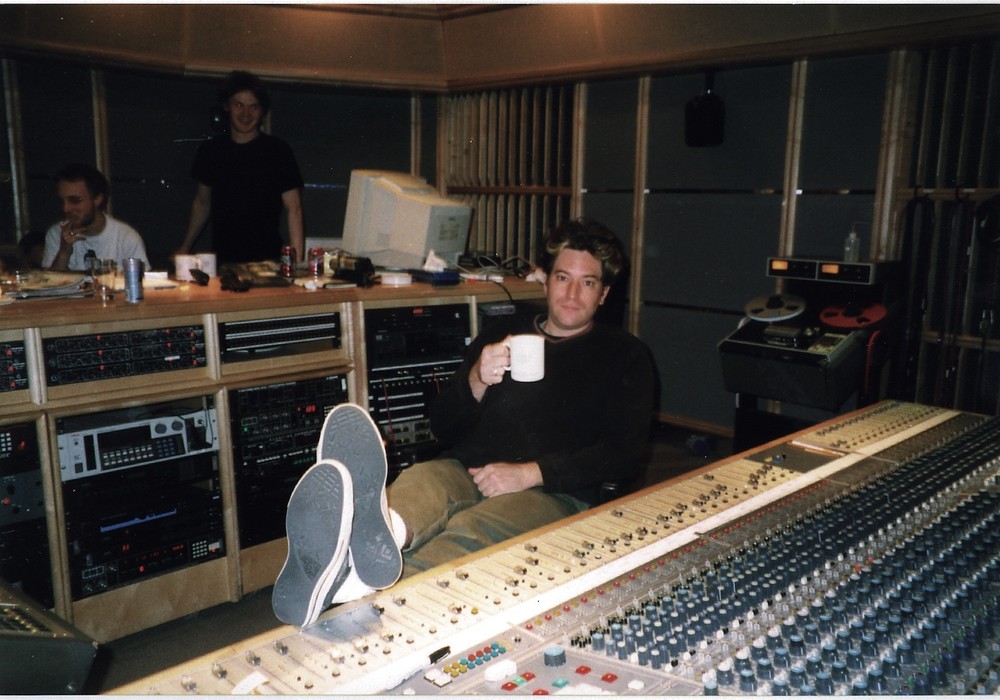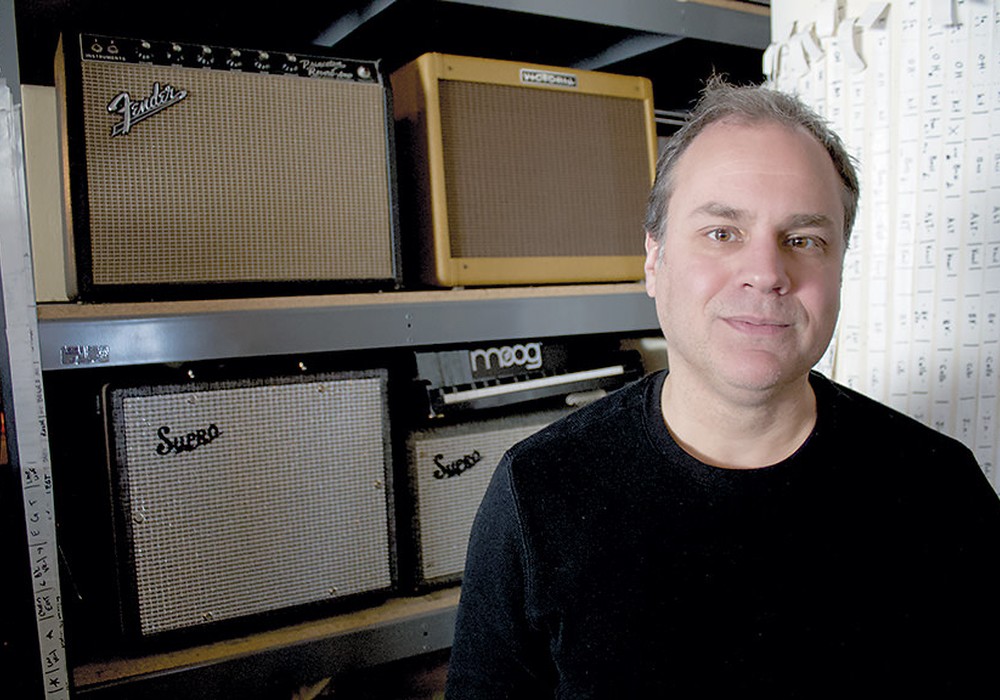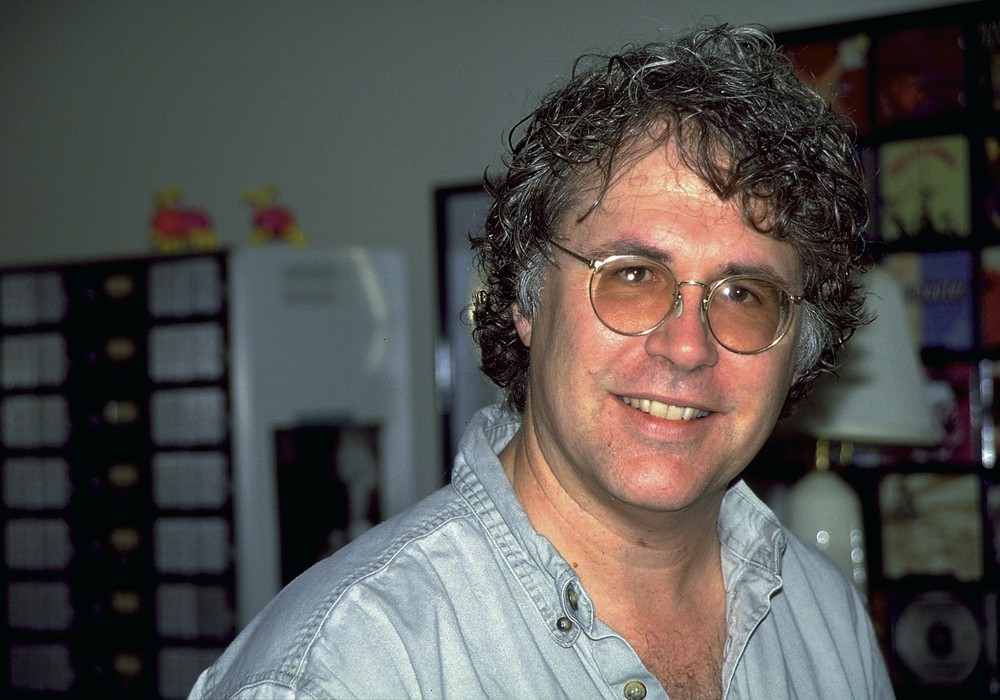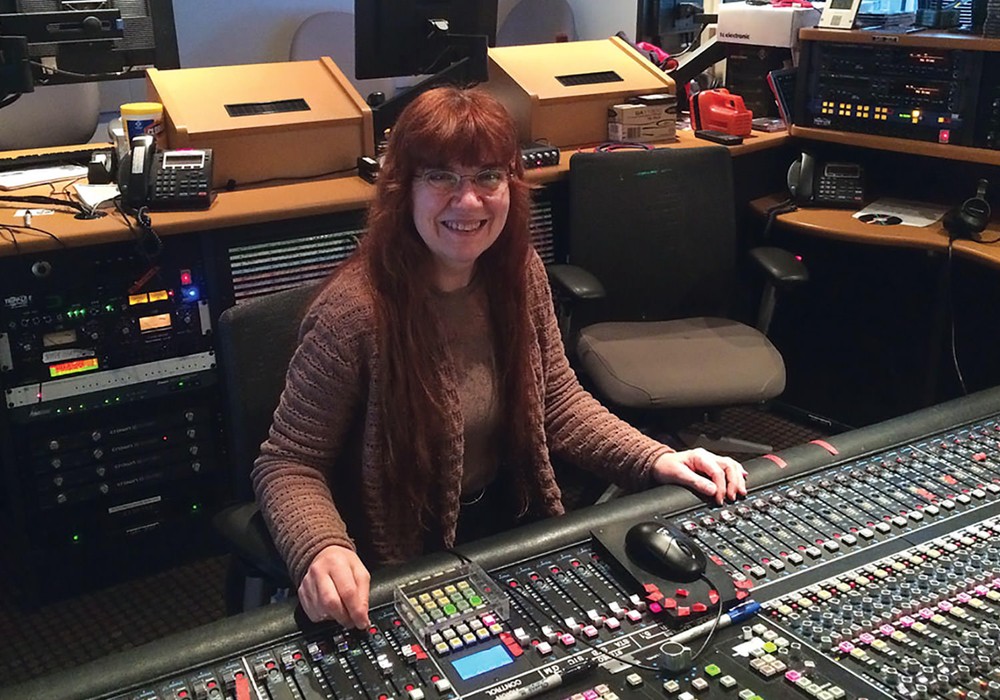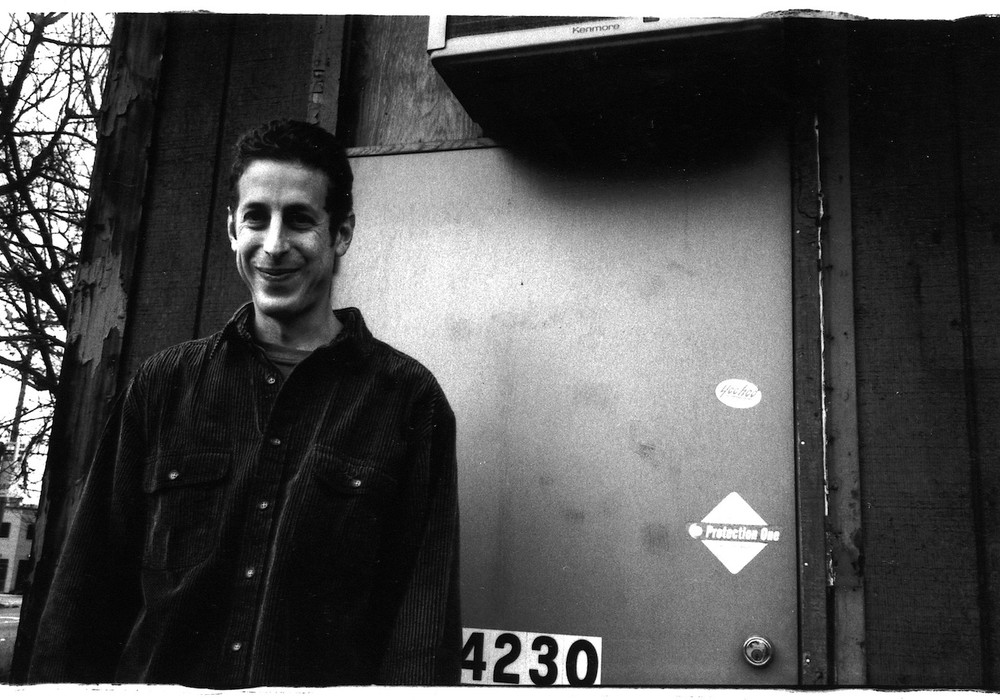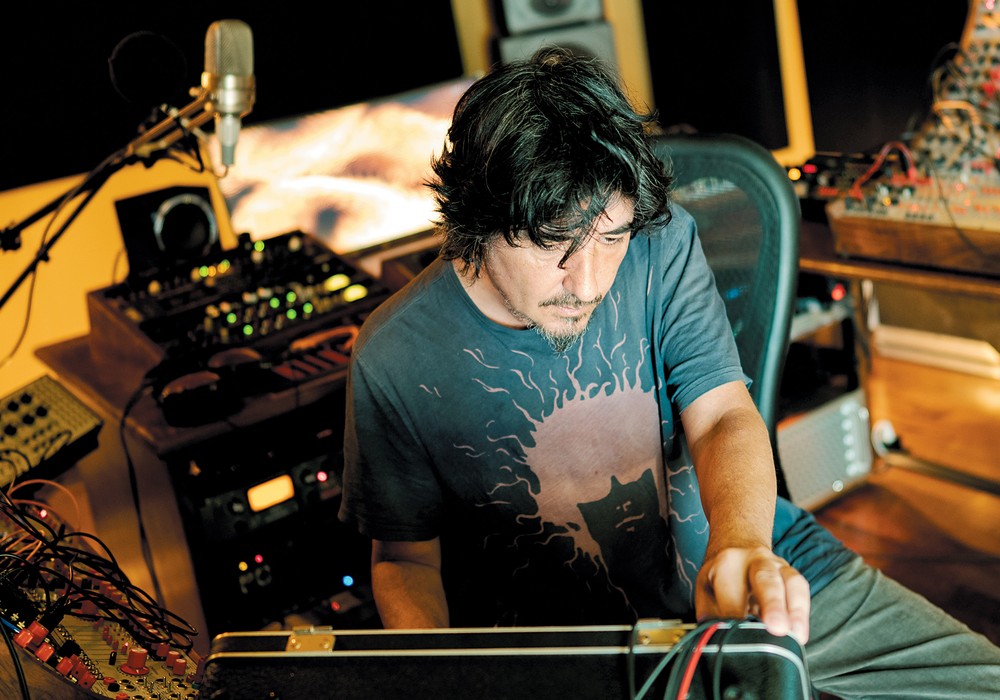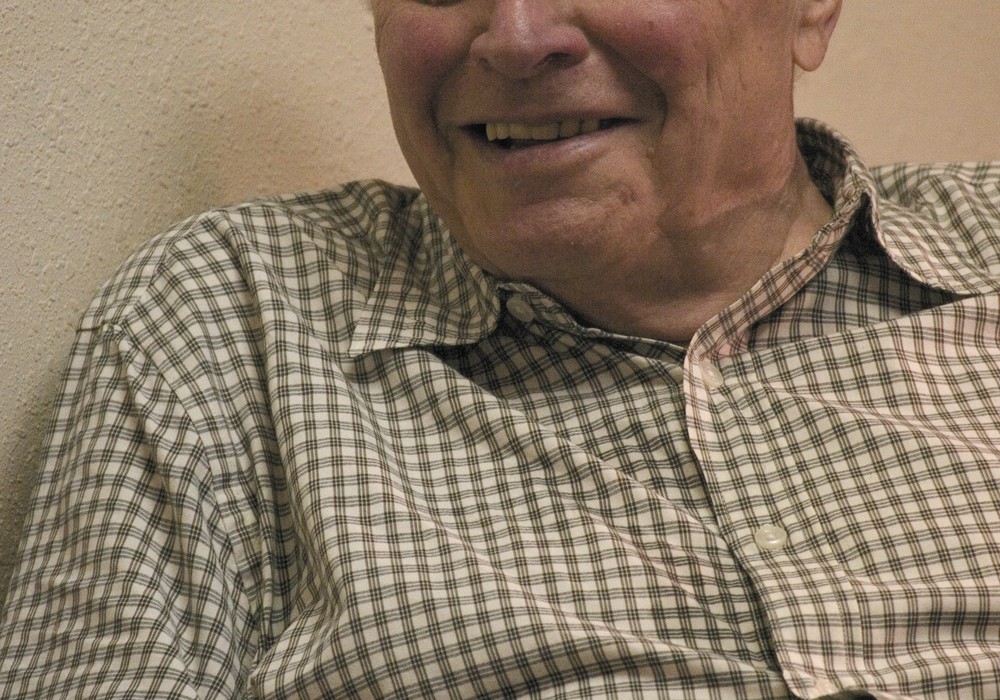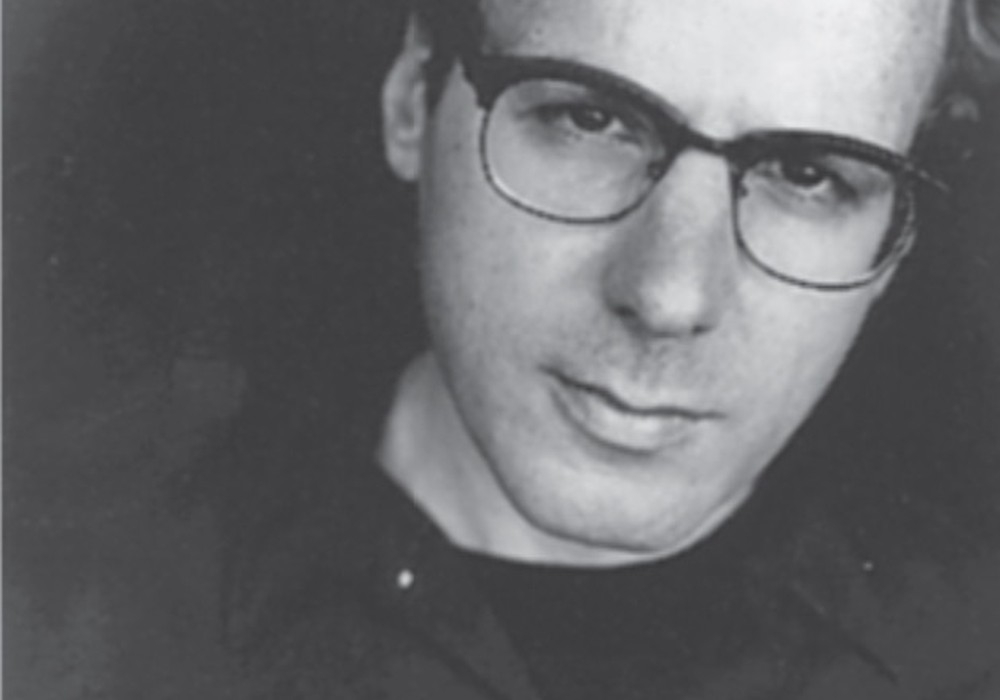Larry Packer owns and operates Uncle Punchy Studios in Silver Spring, Maryland. His current setup includes 20-bit ADATs (32 tracks) as well as Pro Tools Mix Plus and a Yamaha 02-R digital console. Larry has worked with artists such as with Clutch, Sixty-Watt Shaman, and Avail as well as mastered recordings for Deep Dish Records, Genes CD & Adelphi Records (R.L. Burnside, Skip James, etc). We've known each other for ten years and I finally got around to seeing what he had done with the place since I was last there.
Do you own this house?
Yeah, I've owned this house for ten years. I started out renting it because there was a space in the back that I could put a small studio in.
So when you were looking for houses, you were looking for a bigger space that you could set up a studio in.
Yeah.
What happened to the old basement? Do you just use it as storage now?
There's a jackfield on the wall in the main room and I separated the old room into two rooms so there's two feeds to two separate speaker rooms. I have a Marshall cabinet and I'm going to get a little Sun [bass] cabinet, a 4-speaker one which sounds great. Those go down there and that's my isolation. It's not beautiful, but for basic tracks I tend to close-mic those instruments anyway.
How did you build the big room?
I was going to build one big room in there and I talked to an acoustics guy and he gave me the absolute longest length given my width and height that I could work in for the least amount of standing waves. I went with his acoustics idea. I found out that if you're not building a really multi-sided room, to stay with a pretty strict rectangular shape. The reason being is, and I didn't know this, that if you create a very limited frequency standing wave, that it's a lot easier to handle and deal with then if you tilt a wall slightly and create a band of standing waves in a certain frequency area. So let's say you've got a standing wave that's sitting at 100 Hz and then you cock your long wall a couple of degrees then all of a sudden you have a multitude of standing waves from 90-110 Hz. So I did that and I talked to RPG and their idea was absorption on the walls and diffusion on the ceiling, which I wasn't into. It seemed like I would waste my time doing a large room and then kill the reflections on the walls because we don't hear things that way. I'm not killing them because I did the opposite thing-some hanging panels on the ceiling to break up the ceiling-to-floor reflections and diffusion on both of the long walls. You've heard it — it's a very live room. You can hear it on [Clutch's] "Jam Room" really.
The wood helps.
The drum sound is huge and the wood helps. I used Hudson Industries' floating floor system which is the same one they used when they redid the Kennedy Center so the floor is completely floating.
On little rubber pucks?
Yeah. And the floor is pushed up against the foam against the walls so the walls don't touch the floor. The ceiling is a grid hung down from the real ceiling so that the ceiling isn't connected to the ceiling joists. It was kind of labor intensive.
Did you do most of it yourself?
I didn't do any of it myself. What I did myself was I went out and did lots of audio/video installations and worked really hard and paid carpenters a third of what I was making to be good carpenters. I'm kind of a perfectionist and I'm also ADD, so those two combinations work really badly together. It means that I try to do things too quickly, I screw them up and complain about them later. The cool thing is that when someone else makes a mistake, you don't really notice it.
And you can complain about it.
You can complain and make them fix it. I contracted it myself, I did most of the design with the guy and I found people for $20/hr to do the work.
And how long did it all take? Soup to nuts?
A year.
What would you have if you had an unlimited amount of money to spend on gear?
I would combine Pro Tools with... a... Neve, no, I might prefer an API...
I like API.
It's a little snappier than Neve and it's nice... API combined with having the Pro...
